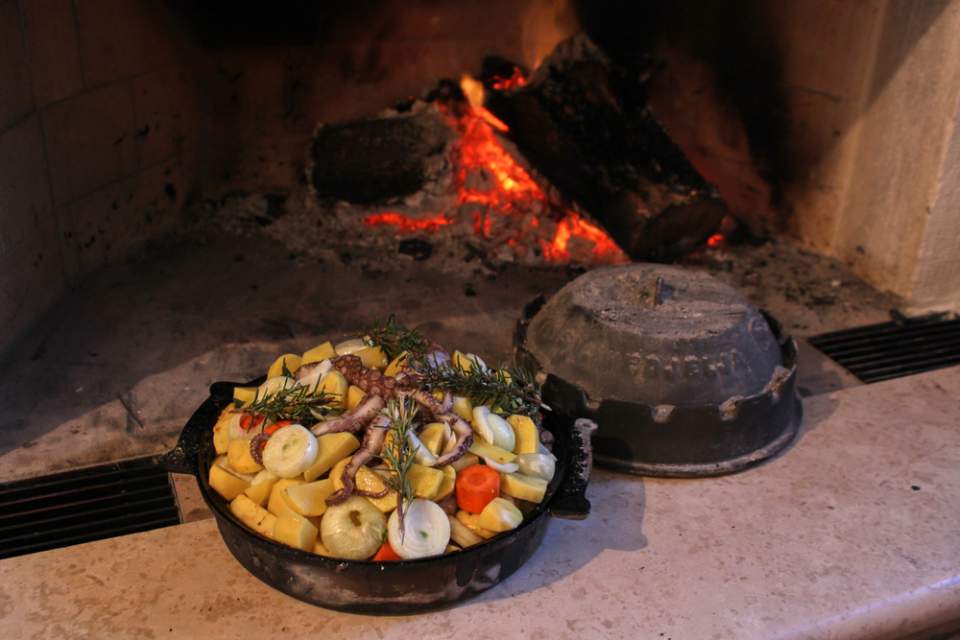November 1, 2023 – When you think of Croatian cuisine, your taste buds may instantly gravitate toward the renowned Mediterranean flavors, fresh seafood, and delightful wines. Why not go beyond, though, and indulge in the culinary wonder known as the Croatian peka.
In Daniela’s words: Oh the peka, our way of cooking “under the bell”, a method which is ancient yet better today than it has ever been. Usually made with veal, octopus, or lamb, hot coals are placed atop the bell-like lid, and the slow cooking ensues. You’ve never tasted something so tender and full of flavor (and enjoy those fat-soaked potatoes).
Peka is a true testament to the Croatia’s culinary heritage. According to Enciklopedija, its origins could be traced back to prehistoric times (Neolithic) in southern Pannonia and the Balkans. With the use of open hearths, it remained in use in eastern Slovenia, southern Hungary, Romania, Bulgaria, Serbia and Montenegro, Bosnia and Herzegovina, and Italy.
In Croatia, the ceramic bell was a product of local potters; in the Adriatic and Dinaric areas it was shaped on a manual potter’s wheel (cripnja, peka, pekva), and in Slavonia with the help of a mold (pokljuka). Iron pekas, under the name sač, spread to the Balkans through the Ottomans. Over time, they disappeared from the daily life of rural households together with the open hearths. Nowadays, however, the peka is used in restaurants throughout Croatia for the preparation of traditional dishes, and every half-serious household will have and use its own peka as well.
As for the dish – peka is not just a meal; it’s an experience. It typically consists of succulent pieces of meat, such as lamb or octopus, seasoned with fragrant Mediterranean herbs like rosemary and oregano. These are mixed with an assortment of vegetables, including potatoes, bell peppers, and onions. White wine poured in along the process. Simple. But what makes any peka dish truly exceptional is the cooking method.

How to Enjoy Peka Croatian Style
As mentioned above, the peka is not your ordinary cooking pot. The magic happens when this dish is placed inside a wood-fired oven or covered with hot embers from a fireplace. This method of slow-cooking results in a tender, melt-in-your-mouth sensation. Any peka Croatian dish allows all the ingredients to harmoniously blend their flavors, producing a truly unique and delightful taste.
It is not just about food, though; it’s the experience. Preparing and sharing a peka meal is a social event. It brings friends and family together, as the dish requires patience and collaboration. Cooking a peka can take several hours. And though there aren’t that many steps to the recipe (chop, season, place under the bell, and let cook for a few hours), there is a bit of tinkering with the fire, as well as adding the right amounts of wine at the right time. Not anyone can be a peka master. Still, it is a great alternative to a barbecue, for example, as it doesn’t require constant attention.
If you’re looking to taste this magnificent dish but don’t have a peka master among your family or friends, you’ll be happy to learn that you can have it in most traditional Croatian restaurants. What might vary, depending on the region you visit, is the emphasis on meat or seafood. Don’t make us choose our favorite.











